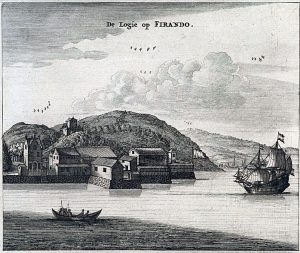
The VOC officer Carel Hartsinck fathered two sons with his Japanese consort during his stay at Hirado in Japan. The youngest, Willem Carel Hartsinck, followed in his father’s footsteps and had a distinguishing career with the VOC in Asia. The eldest son, Pieter Hartsinck, enrolled in the University of Leiden and had a very distinguished career as a mathematician, mining engineer and medical doctor in The Netherlands and Germany.
Early Life
Carel Hartsinck came to the Dutch trading settlement at Hirado in 1633 and was stationed there till 1641 when all Dutch-Japanese mixed families were ordered to leave. In that period, he distinguished himself by building a strong diplomatic and trading relationship with the court of Tonkin, in Vietnam. Carel was even adopted as a son by the King of Tonkin.
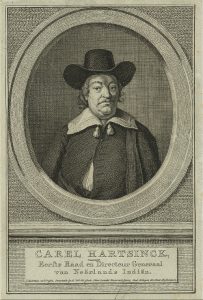
Pieter Hartsinck was born in 1633, or in 1637, on the 15th of October, according to his enrolment registration as a student in Leiden. The 1637 date is probably the more likely, as his father had only just arrived in Hirado in 1633. Also, it is the date Pieter himself refers to in his own epitaph.
On 3 November 1641 Carel, his Japanese consort, and their two sons left Hirado. All Dutch mixed families were ordered to leave by an imperial edict. The remaining Dutch VOC staff were sequestered on Deshima, an artificial island in the port of Nagasaki. According to another account the mother was left behind because it was forbidden by imperial edict for Japanese people to travel abroad.
The family first traveled to Fort Zeelandia in Taiwan, where Carel briefly held the post of assistant VOC director. They then moved on to Batavia, the Dutch held capital on Java in Indonesia (today’s Jakarta). Here the Japanese mother of Pieter and Willem Carel died in 1642.
Leaving Asia for Europe
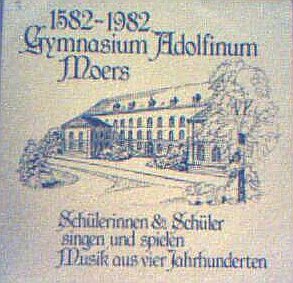
On the 12th of December of the same year, father Carel leaves Batavia as the commander of the VOC return fleet and takes his sons with him. Although there are rules that forbid VOC employees to take mixed-race children back to The Netherlands. They arrive safely in Holland in July 1643. During, or soon after the journey, father Carel Hartsinck marries the Dutch widow Sara de Solemne. The family settles in father Carel’s hometown of Meurs, where Pieter and his younger brother Willem Carel attend the Adolfinum, the city’s Latin school. Here they received an excellent education. In the years that follow several half brothers and sisters are born.
Studies at Leiden and Duisburg
On 12 September 1654 Pieter is enrolled at Leiden University for the study of Philosophy. He gives his age as 20, which would make his year of birth 1633. But if he was born in 1637, he was only 17 at the time of his enrollment. He gives his name as Petrus Hartsingius Japonensis.
The year 1655 sees him enrolled at the University of Duisburg, where he studies mathematics, physics and metaphysics.
Pieter is back in Leiden on the 28th of August 1660. Now he is studying medicine and gives his age as 22.
The change in direction may have been caused by the death of Frans van Schooten, one of the great mathematicians and Cartesians teaching at Leiden University. Van Schooten must have been Pieter’s teacher as he actually mentions and praises Pieter in the Preface of the second edition of his Latin translation of Rene Descartes’ La Geometrie, (first edition 1659) published posthumously in 1661:
“Petrus Hartzingius, a most excellent and in many ways most intelligent, young Japonese who has hitherto been my most apt student in studying mathematics”
It may be that around this time Pieter also tried to obtain a professorship at the University of Duisburg. He is mentioned in correspondence between two great Cartesians. In a letter dated 3 May 1661 Johannes de Raey requests Johannes Clauberg to consider Pieter for a post as a professor in medicine and mathematics at Duisburg University.
In the administration of Leiden University his graduation is registered on the 6th of May 1669. His age is given as 31, and it is marked “M. Hon. C.”. Meaning Medicine, Honores Causa, with honors.
Career in mining in the Harz
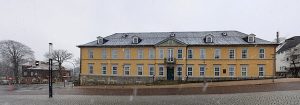
1672 finds Pieter in the Harz, where he has been appointed in the very prestigious position of Hof and Bergraad of the duke of Brunswick-Lunenburg. The rest of his life he is involved in mining in the Harz. Where he also seems to have been shareholder and held other prestigious positions.
He is also mentioned by Valentyn as the author of a plan to make the goldmines of Silidda in Sumatra profitable again. This plan was put before the Heeren 17, the directors of the VOC in Amsterdam, by Hartsinck in 1678 in the form of a booklet in 12 parts.
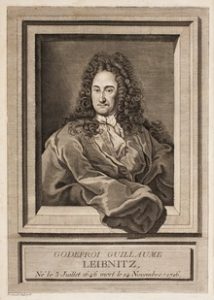
In conflict
The last years of his life see him engaged in a power struggle with the well-known polymath and philosopher Gottfried Wilhelm Leibniz.
The silver mines in the Harz mountains in central Germany were an important source of wealth for the duke and his land, but they suffered a chronic problem which very much restrained their profitability. They were so much flooded with water that they could not be efficiently exploited.
Possibly because of his Dutch background, Pieter was familiar with the recent successful application of wind power. In Holland this was used to pump water out of lakes to create farmlands. He drew up a proposal to do the same for the Harz silver mines. To use a windmachine to pump out the water from the deeper shafts and tunnels. Then to store this water in higher-lying holding tanks. And to use the power of the falling water for pumping during times of drought and no wind. This plan was received with enthusiasm by the Harz mining organization. And at first also at the court at Hanover.
Leibniz
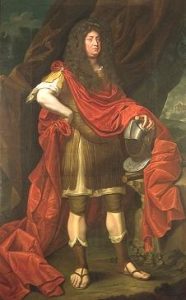
In 1676 Leibniz, in need for a sponsor after the sudden demise of his previous one, accepted the invitation of Duke John Frederick of Brunswick to the position of counselor at his court at Hanover. He never again left. Leibniz was a very efficient networker and quickly build up a large network of powerful connections in the court of the duke.
Leibniz was asked to review Pieter Hartsinck’s proposal and the model of his windmachine, and immediately dismissed it. But then, shortly after, proposed something very similar himself. Although he had no technical background or engineering experience whatsoever.
A power struggle ensued between Pieter Hartsinck, supported by all the engineers and mining experts at the Bergamt of Clausthal. He was fighting to be acknowledged as the originator and owner of the technology and argued vehemently for its soundness. And Leibniz, who was backed by powerful courtiers at Hanover, and vehemently opposed by all the mining experts, who insisted Leibniz’s version of the proposal was technically unsound.
This struggle was effectively ended when Pieter died on the 13th of June 1680.
In the following years, Leibniz spends a lot of time and a lot of (other people’s) money in Clausthal in the Harz mountains, trying to get his constructions to work. But they never did. With practical technology, Leibniz was a complete failure, who never actually finished anything.
Impact of his charity long after his death
Possibly foreseeing his death, later in the year, on April 3, 1680, Pieter dedicates half of his considerable fortune to the institution of a scholarship fund for poor students. To be used to let talented young children from poor background study at his alma mater, the Adolfinum Latin School. But also to attend university afterward. The sum of 30.982 Taler was put aside for this purpose. An enormous amount for that time. Pieter’s charity has been functioning as the “Hartzing-Clausthalsche Stiftung”, to this day.
Sometime during his lifetime, Hofenberg was added to his name. He is often referred to as Pieter Hartsinck Hofenberg. It is not clear how he obtained or received this German surname, or what it referred to.
A glimpse into his soul
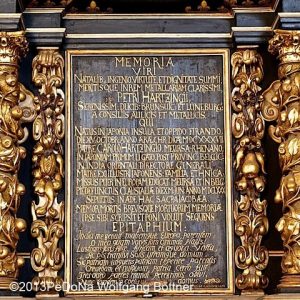
Pieter Hartsinck passed away on the 13th of June 1680. And is laid to rest in the Sankt Jakobi Schlosskirche, Osterode Am Harz, Lower Saxony, Germany. Where the epitaph he wrote for himself can still be seen. It offers a sudden and intimate little peek into the otherwise anonymous life of this talented, intelligent and probably also very kind man with a, for the 17th century, so very unusual background:
“India bore my mother and I, Europe my father. My destiny varied from the beginning. I saw countries in Asia and Africa, and the ocean’s infinite meridian I have crossed twice. I left my homeland early in life to find my father’s country. But I could not find my true home. And so I wander the three parts of the world, but at last I have found my heavenly repose.”
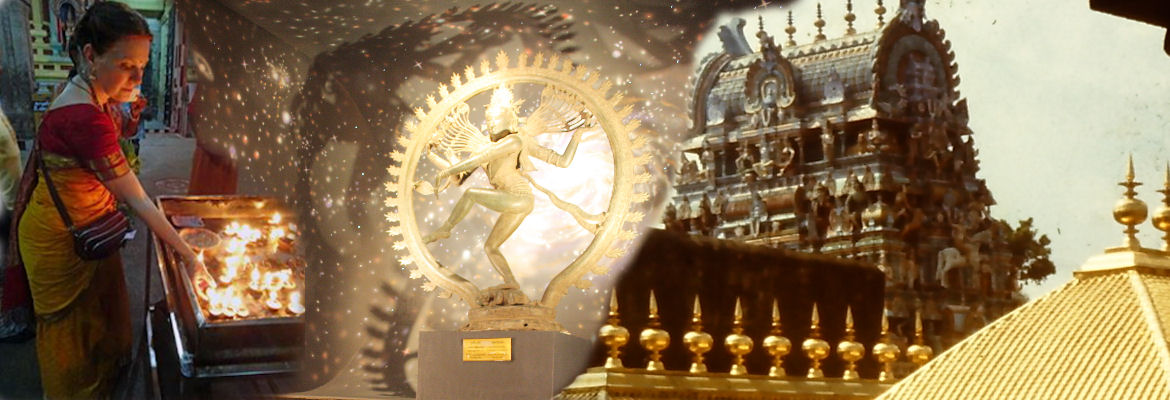
H. Takagi
Being a Spinozist, I knew Petrus Hartzingius referred to as a Japanese in Schooten’s preface to Geometria, and knew about the Harz mining engineer in a patent dispute with Leibniz, but did not know the two were one and the same. Could you recommend some general, biographical source about this man? I am sorry to tell that this atypical contemporary of Spinoza is not very well-known in his native land.
liesbethpankaja
Thank you for your feedback, the information I gathered online from literature and genealogical sources. Most of the biographical information is gathered in an article in a Japanese journal on the history of mathematics. I had no access to it because it has not been digitized. Many others quote from this. Some of the titles I sourced are: Interracial Intimacy in Japan by Leupp; Heeffer, Dutch Algebra and Arithmetic in Japan before the Meiji Restoration, I could not locate the title of this Japanes article in my system.